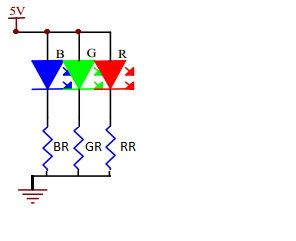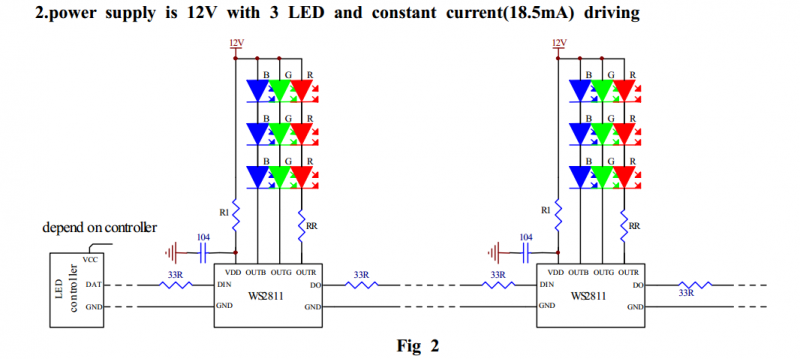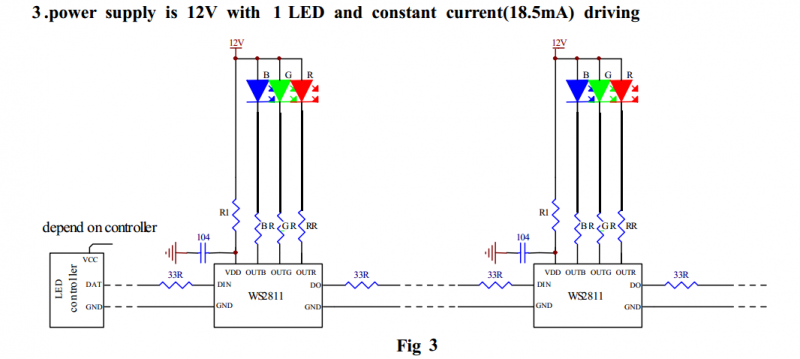Choosing a Pixel Voltage: 5V vs 12V
General
There are many Different Styles of Pixels that are available with different design features like shape, integrated circuit and voltage available. Choosing the right pixel depends on your specific use plans and one of the most common questions is which voltage pixel should you buy. Choosing between the two most common voltages, 5vdc and 12vdc depends on how you plan to control and how you layout your pixel setup. There are a few general rules:
- Long strings (>50 pixels) are less likely to need power injection if they are driven by 12vdc.
- Long distances from the controller to the first pixel is easier with 12vdc.
- 12vdc power supplies are more expensive per Amp then 5vdc power supplies.
- Some low cost and homemade controllers only work with 5vdc.
- Some 12vdc pixels use less current then traditional 5vdc pixels.
- Voltage drop and power injection are important issues for both voltages.
- 5VDC pixels are more power efficient then 12VDC pixels.
- 5VDC pixels use less power than 12VDC pixels.
Disclaimers
The standard disclaimers pertaining to the information contained on this wiki page are listed here.
THIS PAGE IS STILL IN DEVELOPMENT AND SUBJECT TO CHANGE. PLEASE COME BACK SOON!
THIS WIKI PAGE IS NOT COMPLETE YET.
How RGB LEDs work
Light Emitting Diodes (LEDs) emit a colored light when the proper voltage is applied across their terminals. A typical Common Anode RGB LED used in pixel strings actually had three LEDs (Red, Green and Blue) inside of one housing.
The specific voltage required to light the LED generally depends on the color of the LED. The following table shows the characteristic voltages ( also called Forward Voltage VF) required for each of the three LEDs inside of the typical RGB LED used in pixels.
| Typical 8mm RGB LED Properties | |||
| Color | Forward Voltage VF @ 20ma | ||
| Minimum | Typical | Maximum | |
|---|---|---|---|
| Red | 1.8V | 2.0V | 2.2V |
| Green | 3.0V | 3.2V | 3.4V |
| Blue | 3.0V | 3.1V | 3.4V |
Since we tend to use commonly available 5VDC or 12VDC power supplies to drive the pixels, we have to drop the voltage and limit the current flowing thru the LEDs using current limiting resistors chosen for each color LED to deliver the proper voltage and current.
Current Limiting Resistors
By using a formula called Ohm's Law you can calculate the size and value resistor you need to drop the supply voltage down from the 5VDC or 12VDC to the VF and current that you need for a specific LED. An example of that calculation is:
- What resistor would you use with a 5VDC power supply and a Blue 8mm LED with a VF of 3.1V?
First you need to calculate the voltage that the resistor needs to drop. That is equal to
VDrop=VPowerSupply - VF=5-3.1=1.9V
The table above recommends a current I of 20 ma for a 8mm LED. The formula for resistance gives us:
R=V/I=1.9/0.02=95Ω Generally you choose a resistor for that value or the next higher standard resistor value , in this case 100Ω.
To calculate the wattage resistor needed you use the formula for Power:
P=VI=(1.9)(0.02)= 0.038W. You would use the next standard size up resistor, 1/8 W.
Power Efficiency of Pixels
Because the power supply voltage is not exactly equal to the VF that the LED needs, there is some power wasted as heat in the current limiting resistor. Many common pixels are designed to use 20ma (0.02A) of current per LED color, or a total of 60ma (0.06A) total per pixel. You can then use Ohm's Law to calculate the power used by the LED and the resistor.
| Single RGB LED Pixel Power Efficiency | ||||
| 5VDC RGB Pixel @20ma per color | ||||
| Red | Green | Blue | Total | |
|---|---|---|---|---|
| LED Power (W) | 0.04 | 0.064 | 0.062 | 0.166W |
| Resistor Power(W) | 0.06 | 0.036 | 0.038 | 0.134W |
| Total Power (W) | 0.1 | 0.1 | 0.1 | 0.3W |
Different Voltage Configurations
5V Power and 1 RGB LED
12V Power and 3 RGB LEDs
12V Power and 1 RGB LED
Related Links
Different Styles of Pixels
Controllers
Dumb RGB or Intelligent Pixels??
Things You Will Need To Get Started With Pixels
Pixel Wiring Colors
Power Supplies



